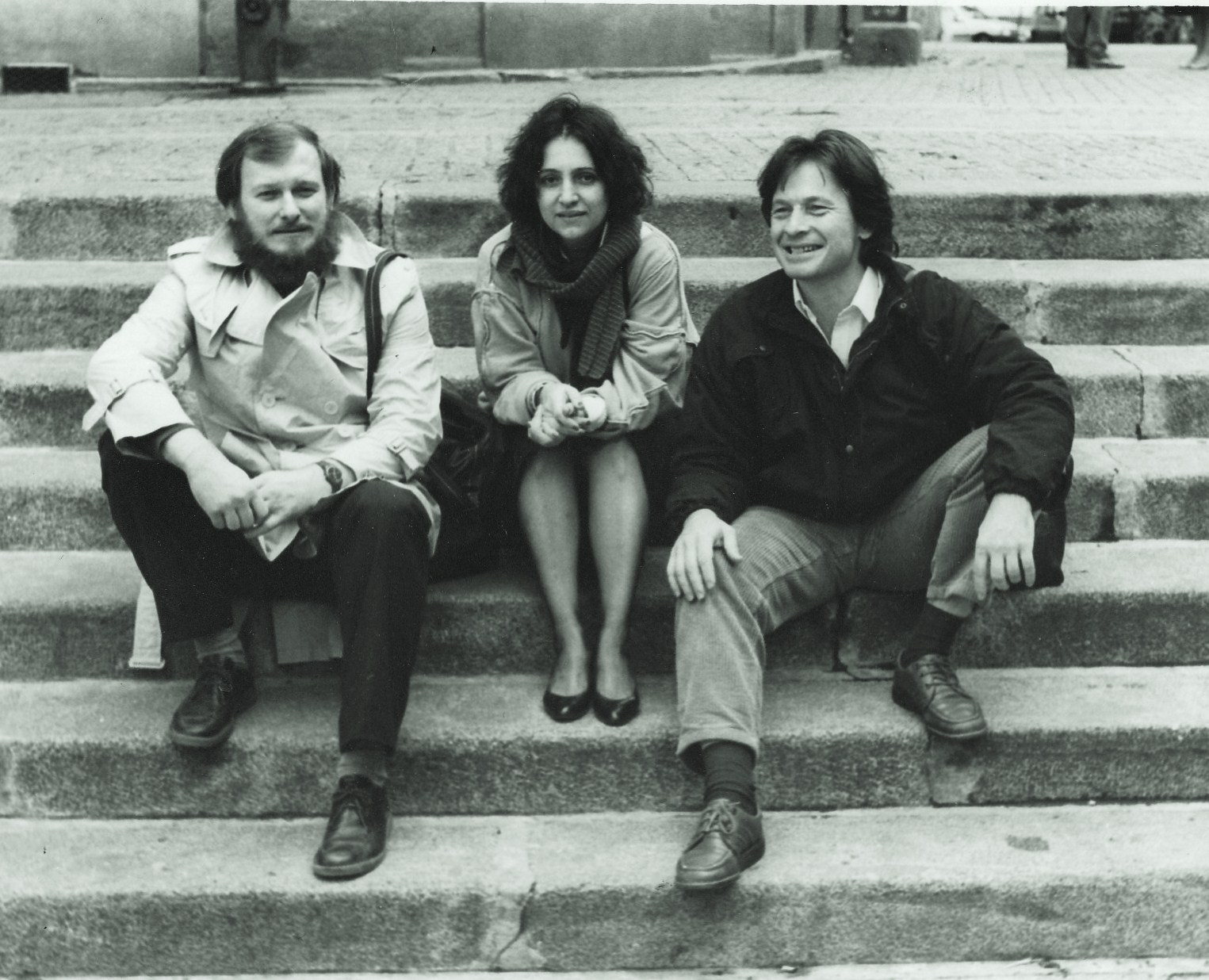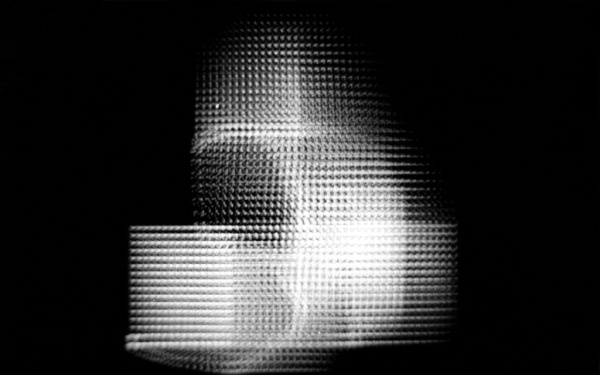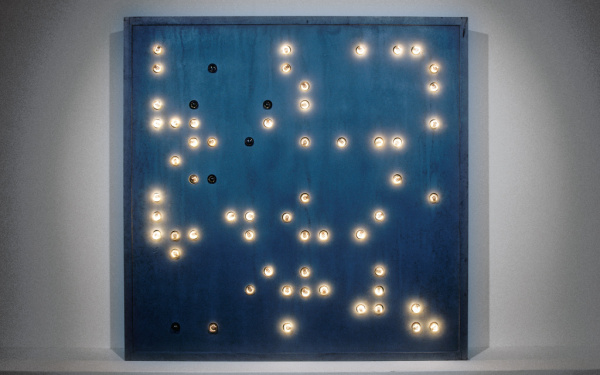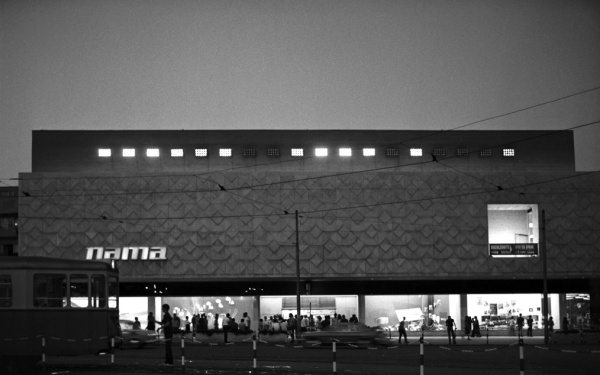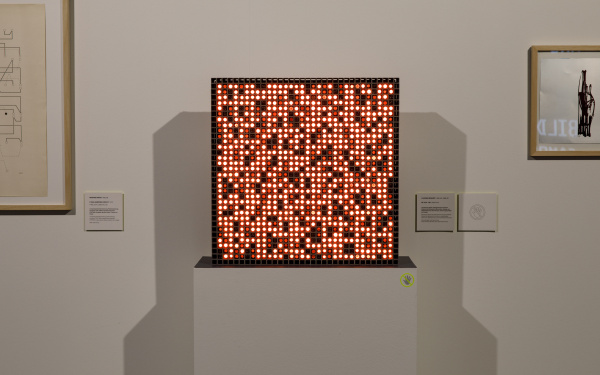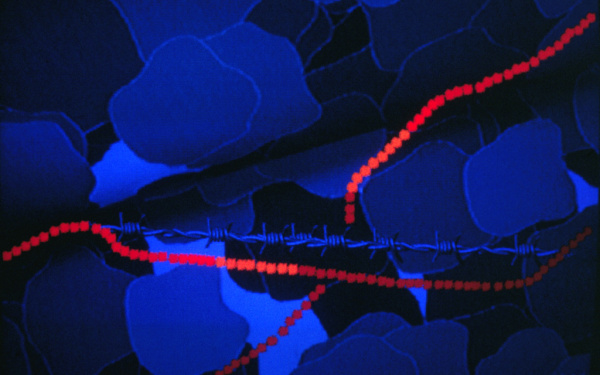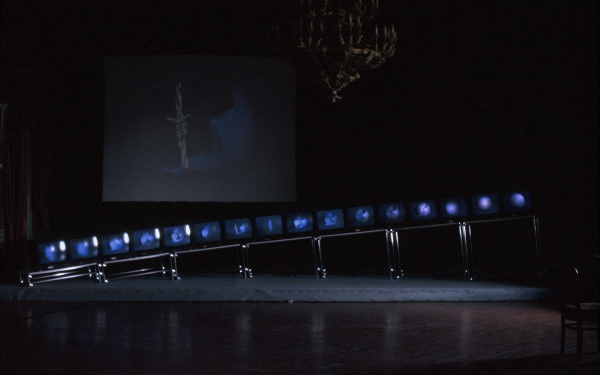- Event
- Talk
Vladimir Bonačić & bcd: CyberneticArt
Talk and Film Screening
Wed, November 20, 2019 7:00 pm CET
- Location
- Lecture Hall
The event is dedicated to the visionary work of Vladimir Bonačić, which was created at the end of the 1960s, and to the projects that Bonačić has been developing since 1971 under the name »bcd« together with architect Dunja Donassy-Bonačić and engineer Miro A. Cimerman developed.
In an conversation with Margit Rosen, Dunja Donassy-Bonačić and Miro A. Cimerman provide insight into the history of »CyberneticArt« since 1968.
In the years 1968–1969 one of the first computer art festivals worldwide was held in Zagreb: »tendencies 4. Computers and Visual Research«. The festival was part of the international artist movement »New Tendencies«, which emerged in Zagreb in 1961 and advocated an art concept that defined art as research. Artists, scientists, philosophers and art historians traveled to Zagreb to explore the transformation of art and design through the use of computers and to discuss the possible effects of this technology on communication and society.
One of the participants was the engineer and scientist Vladimir Bonačić, who at that time was working at the Zagreb National Research Institute Ruđer Bošković . Inspired by the festival, he began in the same year to develop computer-generated and computer-based »Dynamic Objects«, processes and urban installations that generated complex light and sound structures. The jury of the international competition for »Computer and Visual Research«, held in 1968 as part of the Zagreb Festival, awarded Bonačićs a prize for its work in particular for the use of visual processes in scientific research. The basis for Bonačićs's artistic research was his scientific work in the field of computer-aided pattern recognition (with a focus on Galois fields), cybernetics, electronics and computer technology, as well as his fascination with communication and perception theory.
Film excerpts and a conversation with Dunja Donassy-Bonačić and Miro A. Cimerman under the title »Seven Modalities of Contributions to Improving the Information Society« give an insight into the diverse work of Vladimir Bonačić and the »bcd CyberneticArt team«: into artistic and technical aspects of the computer-based interactivity of their »CyberneticArt« (seven generations) since 1968, in the development of the UNESCO-supported program »Jerusalem Program in Art and Science« at the Bezalel Academy of Arts and Design, Jerusalem, and in the groundbreaking developments of the »bcd CyberneticArt team« in the field of information visualization for German television in the 1980s and 1990s.
bcd CyberneticArt team
The team, which was inspired by the international artist movement New Tendencies and is dedicated to projects at the intersection of art and science, was founded in 1971 under the title »bcd« by Vladimir Bonačić, Miro Cimermann and Dunja Donassy. The title is an acronym for the surnames of its founders. Later the group operated under the name »bcd CyberneticArt team«. After the death of Vladimir Bonačić in 1999, Donassy-Bonačić and Cimermann continued their cooperation and now dedicate themselves to promote the New Tendencies movement, participating in numerous media archaeological research projects and investigating what contribution »CyberneticArt« can make to enhance the resilience of the information society.
Vladimir Bonačić
Vladimir Bonačić (*1938 Novi Sad–1999, Bonn) studied electrical engineering at the University of Zagreb. From 1962 he worked at the National Research Institute Ruđer Bošković (IRB), where he became head of the Laboratory for Cybernetics in 1969, shortly after having completed his doctorate. In 1968 he presented his first aesthetic experiments at the festival »tendencies 4. Computers and Visual Research«. In the same year he was awarded the Nikola Tesla National Prize for Science. In 1971, he founded together with Miro A. Cimerman and Dunja Donassy the »bcd« (later: »bcd CyberneticArt team«) and became a UNESCO consultant in the field of art and science. In 1972 he became founding director of the international »Jerusalem Program in Art and Science« at the Bezalel Academy of Arts and Design, Jerusalem. After a short return to Croatia in 1978, he moved to Germany in 1979. From 1980 he developed innovative forms of computer-based information visualization for German television together with Donassy and Cimerman.
Dunja Donassy-Bonačić
The architect and artist Dunja Donassy-Bonačić studied architecture and urban planning at the University of Zagreb. In 1971 she founded together with Vladimir Bonačić and Miro A. Cimerman founded the »bcd« (later: »bcd CyberneticArt team«). In 1972, she moved with Bonačić and Cimerman to Jerusalem, where she first worked as an assistant at the Bezalel Academy of Arts & Design in the Department of Industrial & Environmental Design. In the same year, »bcd« initiated the international »Jerusalem Program in Art and Science« at the Bezalel Academy of Arts & Design in cooperation with UNESCO. After a brief return to Croatia in 1978, she moved to Germany in 1979. Starting in 1980, together with Bonačić and Cimerman, she developed innovative forms of computer-based information visualization for German television.
Dunja Donassy-Bonačić works in the field of cybernetic art (graphics, sculptures, installations) and pursues the concept of a balance between science, information technology and art. She also applied principles of cybernetic art in the development of computer-based designs for communication and opinion research in public media.
Miro A. Cimerman
The software developer Miro A. Cimerman studied electrical engineering and worked at the national research institute Ruđer Bošković (IRB). In 1971, he founded together with Vladimir Bonačić and Dunja Onassy the »bcd« (later: »bcd CyberneticArt team«). In 1972, he moved with Bonačić and Donassy to Jerusalem. In 1972 »bcd« initiated the international »Jerusalem Program in Art and Science« at the Bezalel Academy of Arts & Design in cooperation with UNESCO. After a short return to Croatia in 1978, he moved to Germany in 1979. From 1980 he worked with Bonačić and Donassy to develop innovative forms of computer-based information visualization for German television.
Imprint
- Moderation
